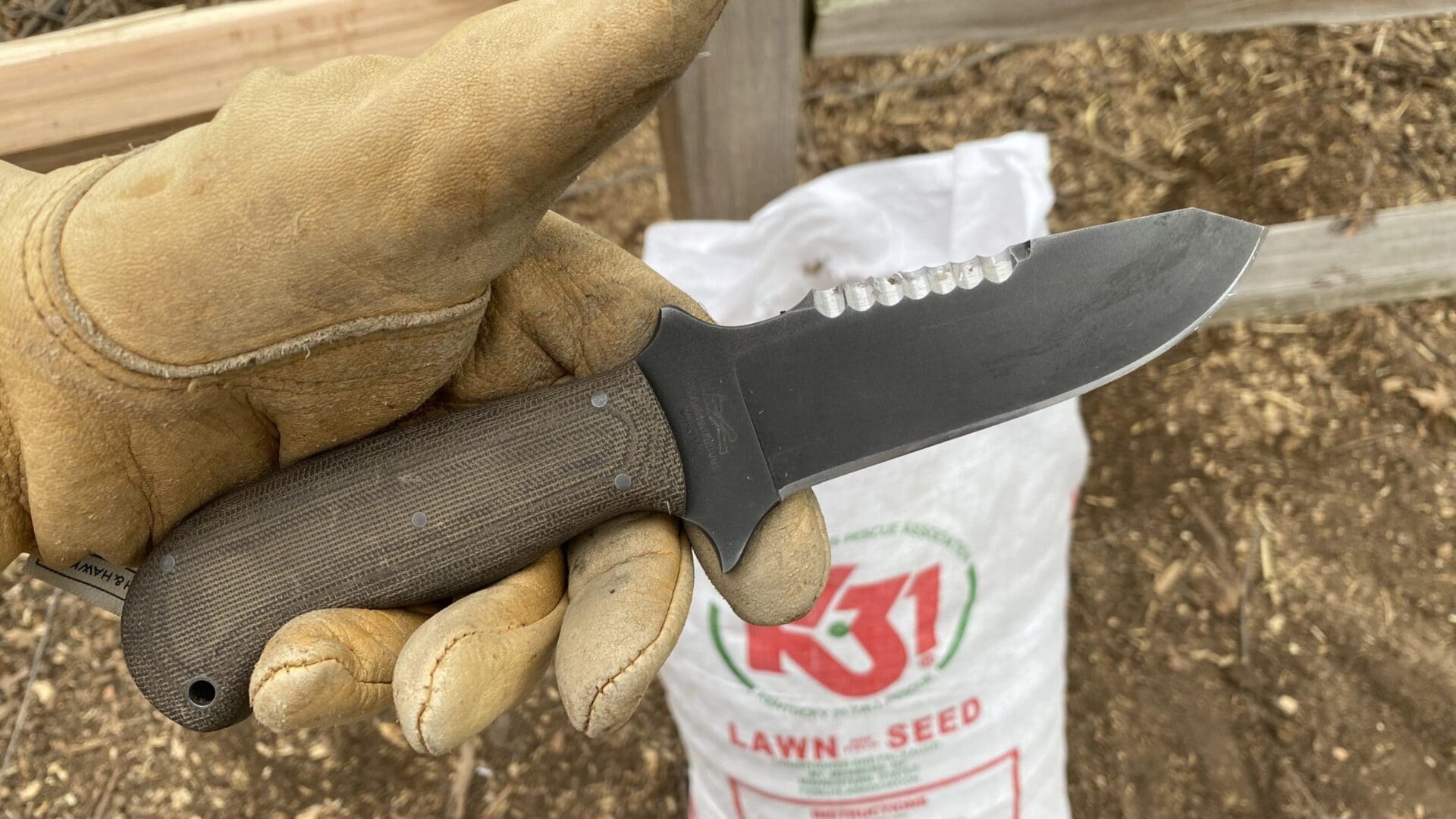
A while back my friends at The Knife Connection sent me a Winkler Utility Knife to put through some hard use tests. When say hard, I mean hard use. This knife has been put through the wringer in my barnyard and has been dropped in chicken sh*t piles. Not that that is a real standard of durability, but that’s only a small taste (yum) of what this knife has been though in my service.
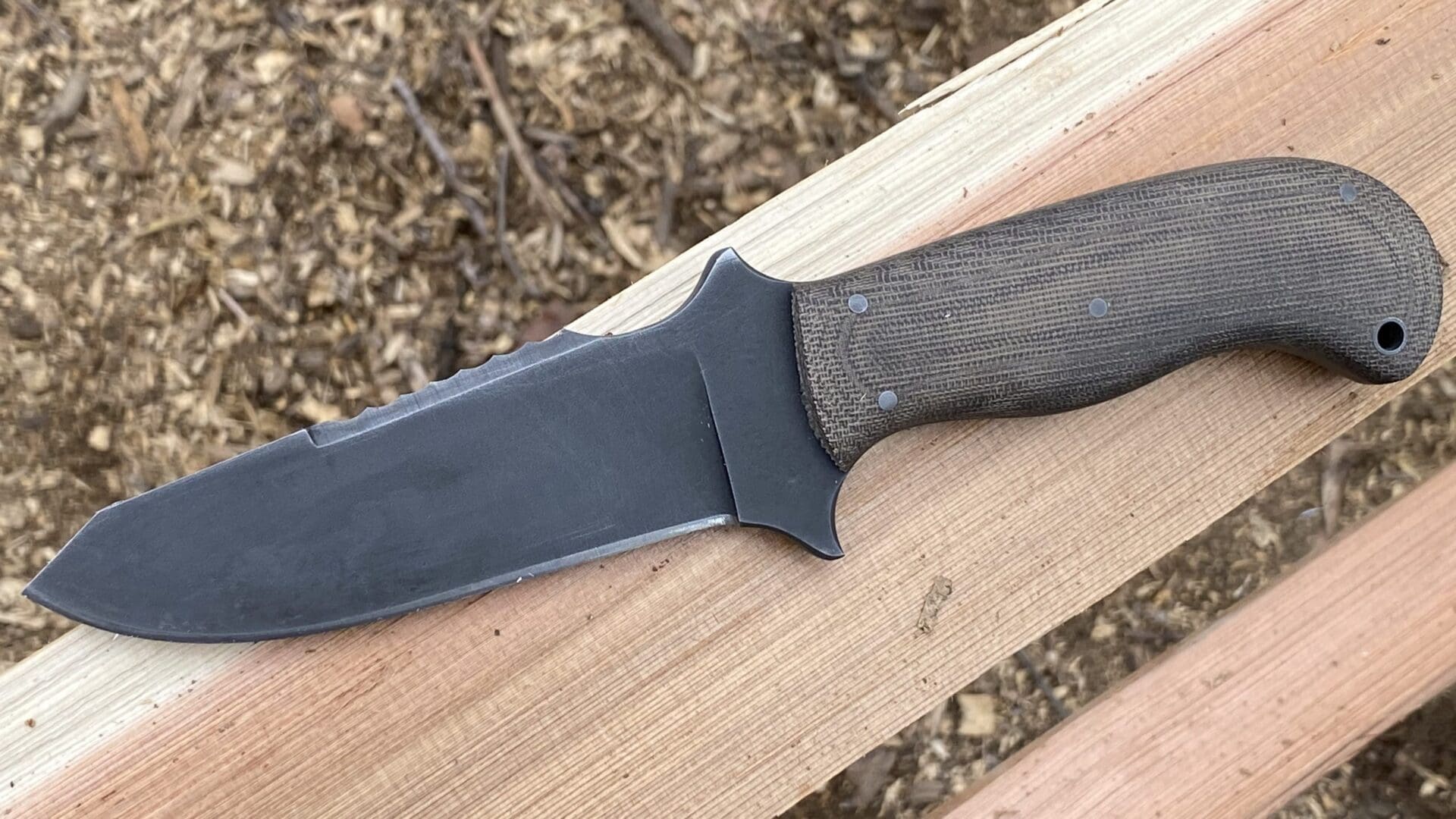
Winkler is a brand most recognized for their badass, hard-use knives that hold a special place in the hearts of military vets and outdoorsmen. The brand carries a unique mystique in that they got noticed by the military…and Hollywood.
The Winkler story goes like this, as told on their website . . .
“Daniel Winkler began making knives in 1975 and became a fulltime bladesmith in 1988. He earned accreditation as a Master Bladesmith from the American Bladesmith Society in 1993. As a historical enactor, he drew inspiration from the knives and axes of the American Frontier- a time when the tools a man carried meant sustenance and survival. That influence translated to a recognizable style that brought Winkler and his sheath-making partner Karen Shook widespread fame. That same influence remains evident in the tools created by Winkler Knives today.
Winkler’s focus on Early American weaponry led to his making knives and axes for the motion picture LAST OF THE MOHICANS. As unlikely as it may seem, that job led to his working with SOF Teams from around the world. Just after ‘MOHICANS’ was released to theaters in September 1992, a Navy SEAL based in the Virginia Beach area having just returned from deployment in Operation Desert Storm, was tasked with sourcing a high-performance breaching/combat axe. After watching the film, the SEAL inquired as to who made Magua’s tomahawk. As Winkler was the maker, the SOF Operator contacted Daniel. What followed was the first Winkler Knives Breaching/Combat Axe. The Operator immediately recognized the virtue of an integral full tang axe with a combat spike, however, funding issues prevented the project from becoming a reality. The SEAL personally purchased the prototype axe, carrying it with him on every deployment for the remainder of his Naval career, and after military retirement as a game warden in North Carolina.
The world changed on September 11, 2001, as did the life of the former SEAL who first approached Daniel Winkler in the early 1990’s. The retired combat veteran re-entered service in Army Special Operations. Before long, his full tang axe was back in action. As his new Teammates and fellow Warriors saw the effectiveness of the axe, Winkler was asked to make more. Demand soon exceeded Daniel’s capacity to hand forge the axes. The proven performance of the axes prompted additional projects. Special Ops translated to special needs. In response, Daniel developed technology to increase production without any compromise to quality or performance. The end result- Winkler Knives.”

I have two Winklers and they are certified hardcore tools. The Utility Knife is my go-to for all my projects now. It’s right on my tool belt next to my tape measure and beer holder. I have used this knife for all manner of tasks and I’ve not been kind to it other than to restore the edge when it (rarely) dulls.
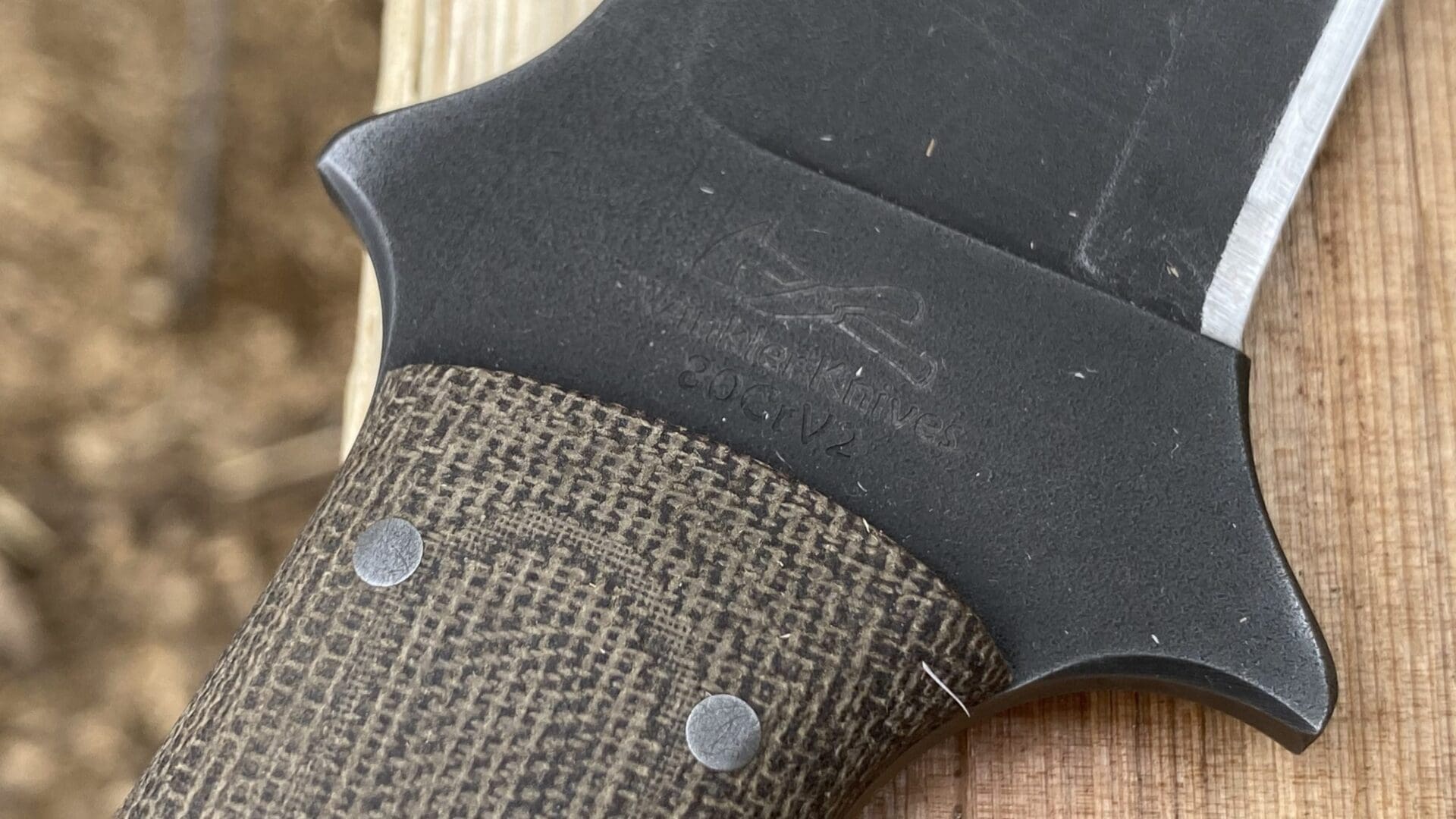
The primary uses I’ve had for the Utility Knife have been in building structures and working on wood projects. It is exceedingly useful in blade shape and features an integrated guard in the blade.
This is the only minute thing I don’t like. The guard is the same width as the tang and it can rub on the finger if you need to stab it into something repeatedly. It’s never caused me pain, but I’d have liked it if the handle scales came out just slightly further in that area.
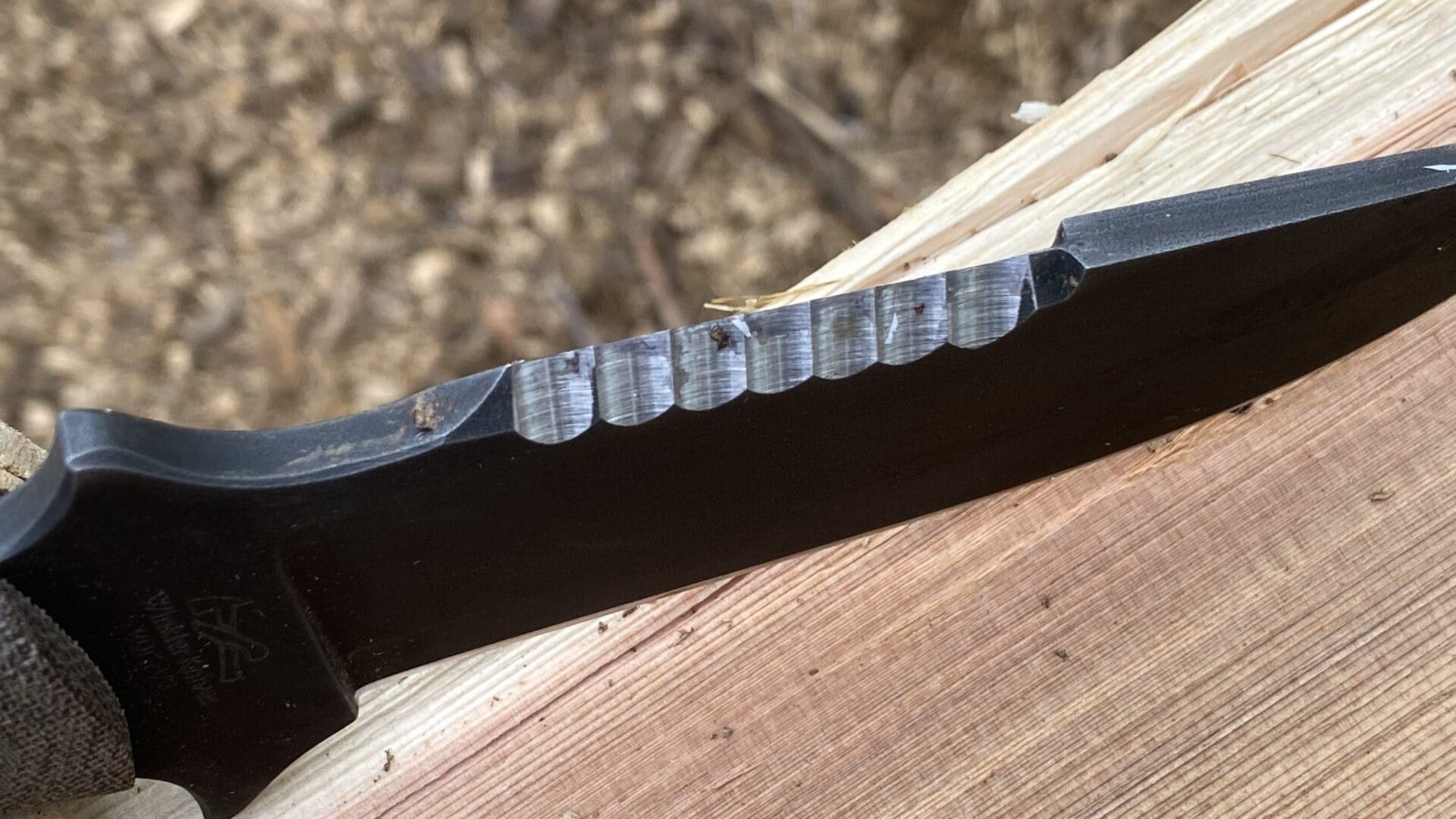
When I put up a split rail fence recently the knife came in really handy removing excess wood left over in the sockets and shaving off large splinters. It was also used to finely reshape the male end of the rails to allow fit into the sockets on the posts.
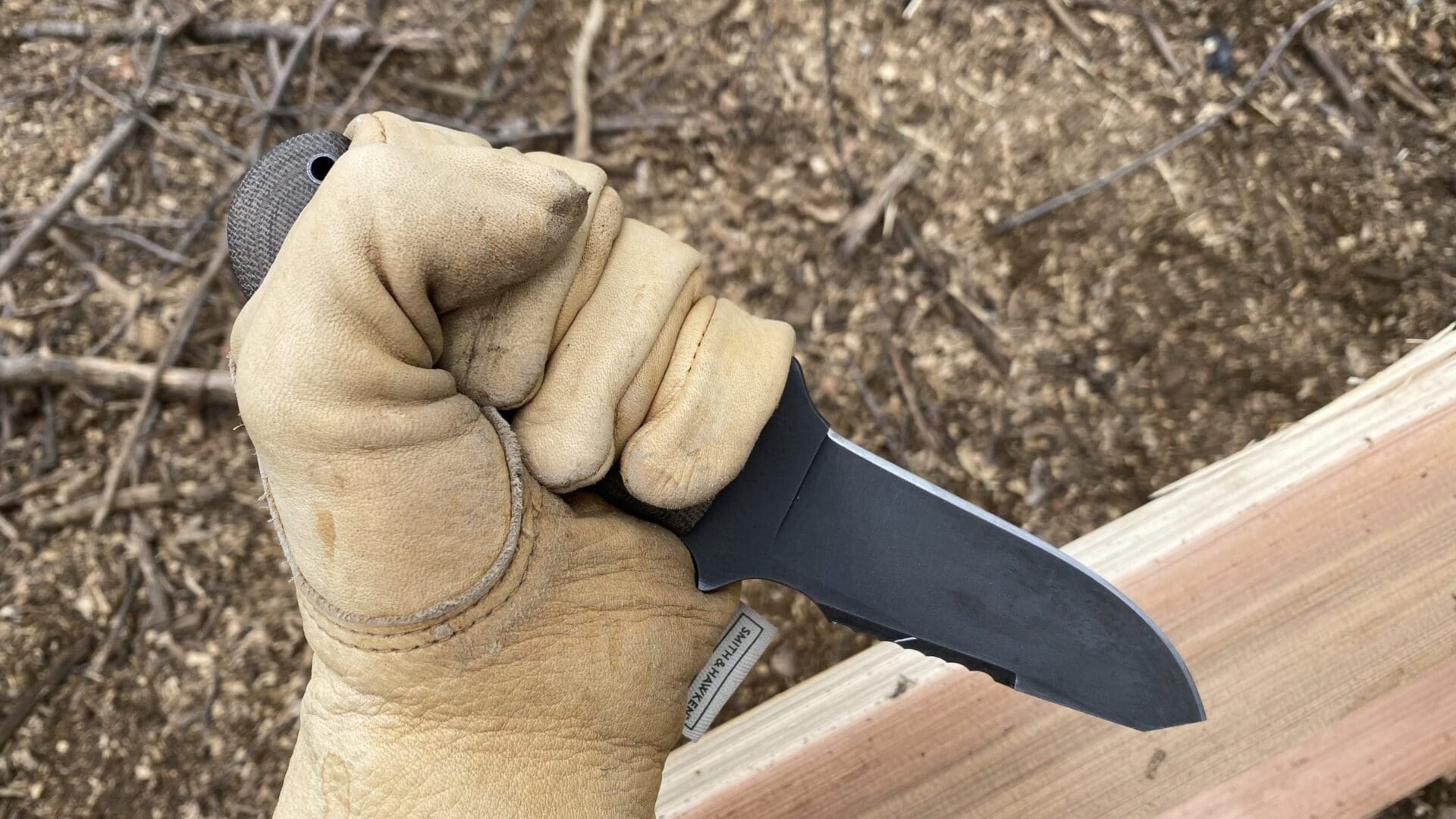
I bought a large new chicken coop for my barnyard and it drop-shipped to me via semi-truck. I used the Utility Knife to break down the crate and to cut the cable ties and tie-straps. The knife saw a lot of good use that day and was comfortable to use for light prying and chopping.
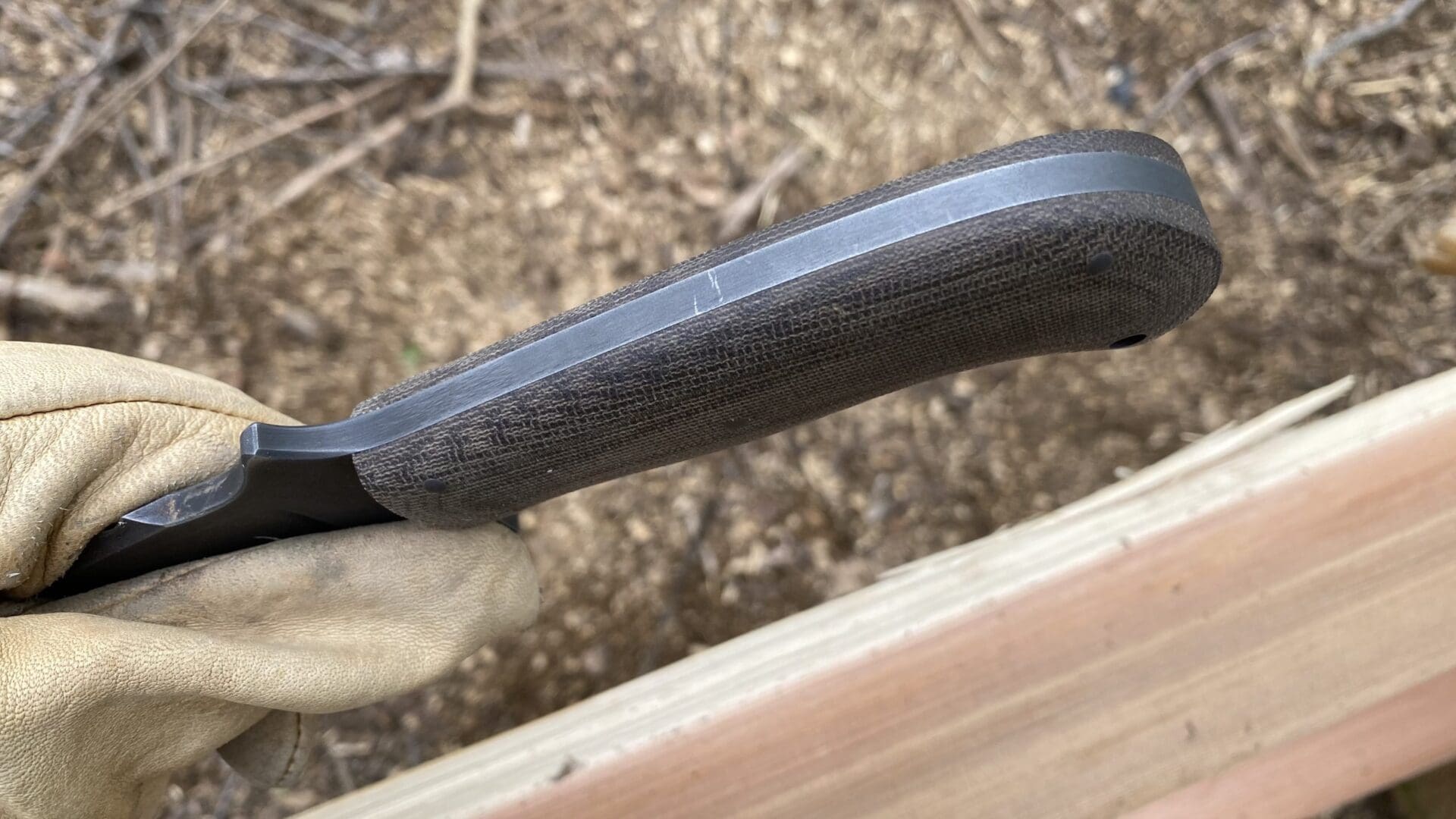
The finish has held up really well, but it has taken on obvious wear from all the use, as you’d expect. The edge has only had to be stoned twice and it has taken no damage or chipping to speak of. The serrations on the top are still sharp and very functional.
Speaking of those serrations, these have been a great addition, but I find that that shape and contour of the grip makes it difficult to use the serrations in a downward sawing motion. The grip has a saber-style shape and down-tuned butt with lanyard hole. The belly of the grip is low, and if you flip the blade over to saw with it, there’s no way to get a comfortable, solid grip.
That means you’ll have to saw putting upward pressure on the 80Crv2 tool steel blade from underneath, not something I’d recommend doing much, or sawing with the blade point-down with the serrations inside the grip. Again, not a strong angle.
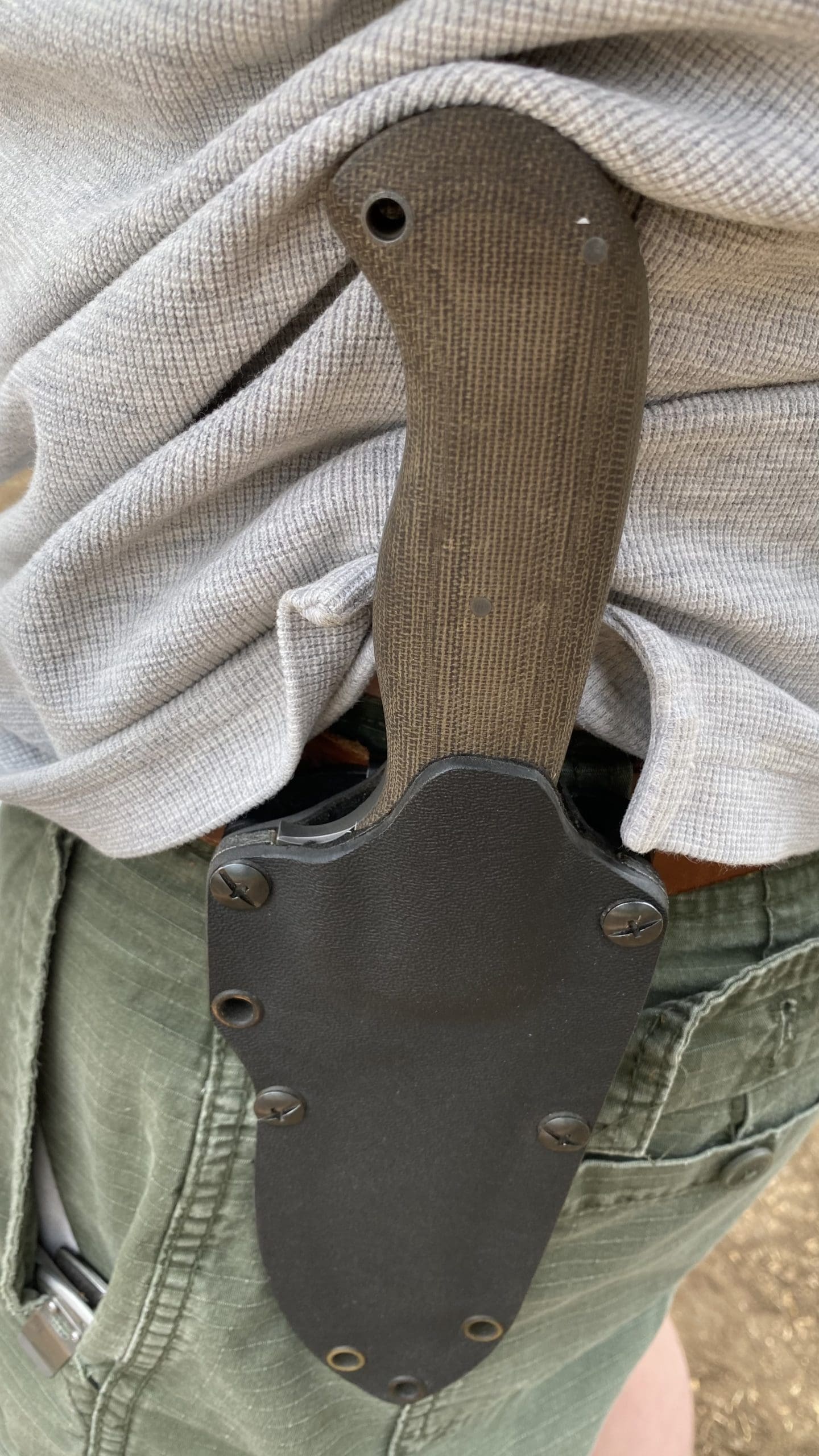
That said, I don’t think the serrations are the primary selling feature of the blade and I like that they aren’t on the edge itself where so many knife makers put them. I find that edge serrations are often fragile even on good blades and I’ve had breakages as a result.
Edge serrations are a great idea for light use and EDC, but for hard use I like a clean edge. This knife executes the strength angle well, and I think that if the grip had a slightly different shape it would be much easier to saw with.

Winkler makes a large number of knife types, and yes, they are more costly — the utility knife is $450 — than your average $20 WallyWorld “tactical” knife. I realize I can’t make people understand that not everything is a race to the bottom and you usually get what you pay for in this life.
I’m a knife knut and I put my blades through some of the harshest use possible. I have had enough cheap-o blades fail that I’ve come to know quality when I see it. This is truly a quality blade. Yes, it’s costly, however it will likely last you your entire lifetime…and those of your grandkids.




As I’ve gotten older I rarely use a fixed blade knife anymore. Mostly on hunting and boonie trips. I live in a city. I don’t have much, if any, need for a heavy duty utility knife like this. I have a variety of fixed blades collected over the years but they mostly ride my knife drawer.
My Mora Companion is my go to when I need a fixed blade. It’s a light weight straight razor.
450 is about what I paid for my j frame. I carry it a lot more than a fixed blade. YMMV.
I bought my first Companion last week. Love it! A whole lot of knife for the money.
The sheath they come with is sub par. It does work, to a point. But a replacement scabbard can be had. I had my son make me one in leather. He does that sort of thing as a hobby.
When I bought mine it was 15 bucks so I was pleasantly surprised that the sheath was the only ‘cheap’ part of it. Maybe it was 11. I’ve had it for a while.
They haven’t gone up all that much, actually. I paid $18 and change for mine. The serrated blade version is a little more, I think.
That appears to be a very durable knife.
hand forged is sweet. 80crv2 is three times tougher than 1095 and d2, so a good choice for a tough life.
becker knife and tool has a dozen designs made in new york between forty and a couple hundred.
That does look like a great knife. I’d love to have a higher-end tool like that, but alas, my budget doesn’t stretch much beyond Harbor Freight and Walmart.
Thanks ! I own three Striders and two Hinderers , I’ll check these out for sure ,don’t know how I missed them .
If a little research is done, one will find this blade shape is (as close as possible) true perfection for general and survival use.
Samples of this shape go back to the stone age.
As a caveat, a ‘good enough’ blade can be had for less cost.
While I do have high dollar knives, the most used are $200 or less.
And yes I do have handmades and one-of-a-kind knives.
is this the knife that the Fonz carried?
The Fonz carried a no name Bowie knife purchased with three books of S&H Green Stamps.
$450…. I seem to recall catching hell about my “overpriced” $200 Bark River Canadian Special that I’ve used literally every day for the past five or six years.
Can’t beat Bark Rivers, I have a dozen of them. Still, this knife looks more “hard use” to me. I do have some that I like to use hard, most of all the Esee Junglas, which is a beat. And WILL chip on a rock, barely. This, maybe not. I think I’ll have me one.
“ The guard is the same width as the tang and it can rub on the finger if you need to stab it into something repeatedly.”
If you need to stab into something repeatedly, if you hit bone and/or the knife gets slippery from blood, you’re going to want a guard big enough to keep your hand from sliding down the blade and slicing open your own hand or fingers.
Comments are closed.